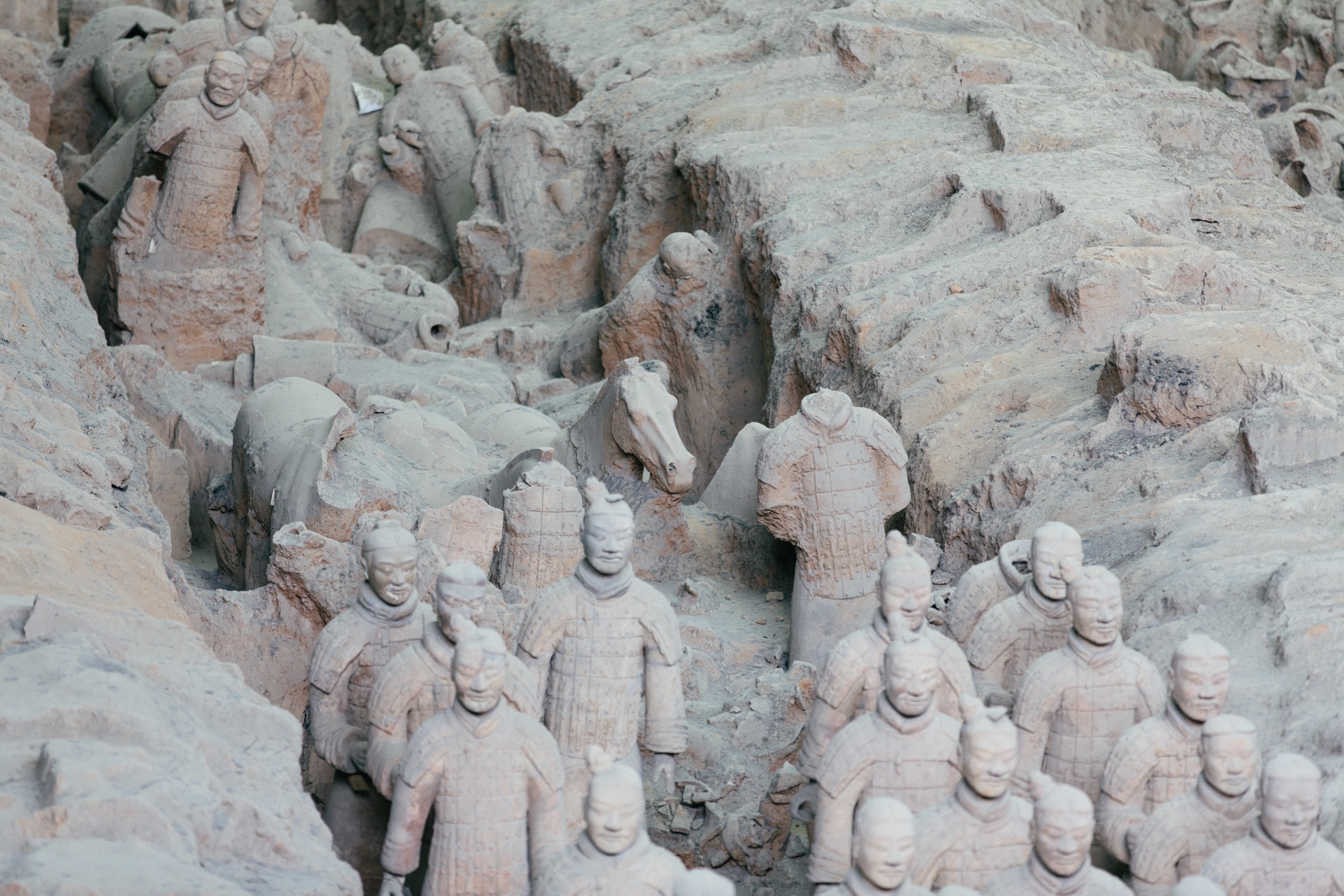A selection of Terracotta Warriors have just gone on display at the National Gallery of Victoria. But, do you know who really discovered the Terracotta warriors?
During a particularly dry March month in 1974, Yang Zhifa’s production unit started to dig a well to water their crops. But this dig would prove to be unlike any they had ever undertaken. As they started to dig, they discovered some uniquely coloured red soil about 2-meter underground that wasn’t common to the area. As the men continued to dig, they found some old terracotta, which was not entirely surprising as pieces of terracotta had been found in this area before. It wasn’t long before the men were hypothesising that they had found an old kiln. Yang explains,
“At first the digging went well. The second day we hit hard red earth. The third day, my hoe dug out the neck of a terracotta statue without a head, but the opening at the bottom was about size of a bowl,” he recalled.
“I commented to my workmate that it was probably the site of an old kiln. He advised me to dig carefully, so that we’d be able to dig out any old jars and take them home for our own use.”
Much to Yang’s surprise though, they soon realised that they had found a statue. The more they continued to dig, the more the discovered. They uncovered more statues as well as some bronze arrows and crossbows. At this point the stories of the different parties involved start to conflict with each other.
Yang contends that it was his time in the army that gave him some knowledge of ancient objects, which led him to take the following action. He continues,
“People had always said that the tomb of the Qin emperor covered an area of just over 9 hectares and that our village was about two kilometres from the mausoleum. These objects could be of historic interest. So, I called some women and harnessed up three two-wheeled carts to transport them to the Lintong district museum several kilometres away…If they aren’t of any historic interest, I’ll throw them into the river, have a wash and go home.”
The alternative story comes from Zhao Kangmin. Zhao was the curator of the Linyi County Cultural Centre/Museum. This museum was very close to where Yang Zhifa and his team discovered the Terracotta Warriors. As soon as Kangmin heard about this discovery and made his way to the site where the Terracotta Warrior statue had been discovered. (Exactly who Zhao was is another one of these points of conflict. By some accounts he was a local cultural official with no formal education in archaeology, but rather, was self-taught. Others, like state run media, identify him as an accomplished archaeologist.)
Zhao explains the story this way,
The farmers saw the terracotta fragments, but they didn’t know they were cultural relics, and they even broke them…It was me who stopped the damage, collected the fragments and reconstructed the first terracotta warrior.”
Whatever the exact story it wasn’t long before the authorities in Beijing were notified and a full excavation of the site was ordered. Within months over 500 Terracotta Warriors were uncovered.
Today, there have been over 8,000 different life-sized statues found including soldiers, chariots and horses. We now know it was Qin Shi Huang, China’s first emperor, who ordered the construction of the Terracotta Army in 246 BC after he (then aged 13) ascended the throne. Its purpose was to be an afterlife army for Emperor Qin.
But what happened to Yang and Zhao?
By one account, the museum built on the site of the mausoleum offered Yang a job signing autographs for visitors, but he still never received any official recognition of his discovery.
Similarly, for Zhao, he also took to signing autographs. But, he did so in the museum he had worked in beside four terra cotta soldiers and a horse that he had reconstructed in the 1970s. Not content with simply signing his name, he would sign postcards and books for tourists with an extravagant description: “Zhao Kangmin, the first discoverer, restorer, appreciator, name-giver and excavator of the terracotta warriors.”
Quick Facts
Over 700,000 laborers worked around-the-clock for approximately 40 years to complete the terracotta army and tomb complex.
Each warrior has unique facial features, no two figures are exactly alike.
As a way to mark their own pieces of work and to ensure the standard of quality, each craftsman carved his name into the pottery figurines he created.
The construction of the Terracotta Army did not follow its original plan. Due to the sudden death of Qin Shi Huang in 210 BC, the tomb had to be sealed ahead of schedule. According to historical records, all the craftsmen who participated in the mausoleum project were buried alive in the burial pits around the tomb in order to keep the secrets of the Terracotta Army from being discovered.
The following photos are from our time Xi’an and visiting the Terracotta Warriors.















































